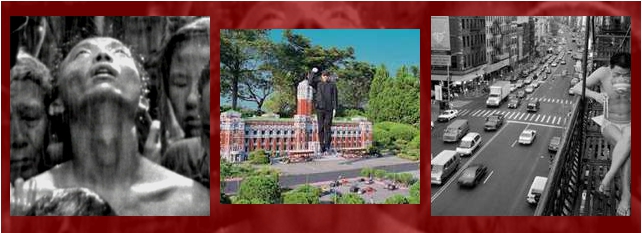Big Red & Shiny’s Benjamin R. Sloat interviews three Taiwanese artists, Chen Chieh-Jen, Yao Jui-Chung, and Chien-Chi Chang, and discusses the challenges of cultural misinterpretation.
Marcel Duchamp said the viewer participates in the artistic process – “the artist sets in motion a creative process that the spectators must complete.” This philosophy of including the ‘consumer’ or viewer of art in the art-making is central to our philosophy here at Slow Art Day.
But, what if the art comes from a different culture? How then do we think about the role of the viewer? Are there some pitfalls that one should seek to avoid, especially in viewing art from another culture? Read here to see what these Taiwanese artists have to say about their own work and a foreign viewership.
– Naomi Kuo, Slow Art Day Intern; edited by Phil Terry, Slow Art Day Founder


Chen Chieh-Jen, Taiwanese artist, brings up a good point in the above-mentioned article when he says that “For the most part we all communicate on a similar emotional level.” Whether the viewer is Taiwanese or American, he/she speaks a universal emotional language that is understood worldwide. I think this is a very important aspect that participants in Slow Art Day events can capitalize on in viewing works more slowly; It is more likely that a viewer will grasp this emotional connection when haven taken the time to investigate the piece.
While I think cultural differences are definitely something we should try to be mindful of when looking at artwork, I think that even the most culturally-aware Western viewer will necessarily always view art, even art created by a non-Western artist, through the lens of the Western canon. And this is where Slow Art Day comes in – the longer one spends looking at and thinking about a work of art the more likely one is to overcome previously-formed conceptions about different cultures and the hierarchy of those cultures in the art world, and perhaps achieve a deeper connection to the work.